Hearing that I am a goat milk cheesemaker I was visited by a French cheesemaker. He married a South African, adopted South African orphaned children and now resides in Cape Town. He makes wonderful cheese. With goats milk. We had a lot to talk about. He brought samples of his most popular cheeses. I and my goat loving Buckaroo Clan wasted no time in gobbling up the yummy cheeses. We agreed that there is something really special about goats milk that makes for a unique cheese. Part of the flavour, I believe, is due to the love shared between goats and their human matriach.
Inspired with new ideas I decided to share my favourite cheese making recipe. Cotija! Earlier this year I shared a simple cream cheese tutorial. Today let's make this unique hard cheese. Cotija is a salty cheddar that hails from Mexican cheesemakers. I love salty foods but what first grabbed me about this cheese is that it doesn't need a long curing process to be ready to eat. Plus: left to mature it is very similar to parmesan. Either way Cotija is delicious and I have been making it for years.
When you start making cheese it need not be overwhelming or complicated. Time consuming yes. But once you grasp the basic rules making cheese is as difficult as most food preparation. There are some essentials to follow to make (almost perfect) cheese: Care of your milk producers being top of the list. I love my beautiful goatie girls. Their health and happiness is a priority to me and it definitely reflects in the sweetness of their milk. Hygienic protocol during the entire processing of the milk goes without saying. Having the right equipment is important. Once you have your rennets and culture, you are good to go!!
Commercial dairies, both cow and goat, pasturize their milk. They also follow - IMO - not the most ethical handling of their goats. Being hippie organic and a lover of animals my goats roam. I do not inject them or brand them. We abhor the cruel debudding practices and removing babies from their mothers. I refuse to feed my goats GMO or animal protein. Most of the time if I need to treat them it is naturally (unless a crisis). Everything plays a part in the longevity of the animal as well as the purity of the goat milk.
But let's get to the cheese making!!
When out of season (while my girls are pregnant) I have to rely on frozen goats milk. The only time I pasteurize milk is to make yoghurt and cream cheese. I still believe the best milk is raw but over the years I have realized that yoghurt and cream cheese is such a finicky food that it is prone to disaster if not first taken through a heating process. Because I have large quantities of goats milk I usually handle 30 litres of milk at a time. But for today we will only use 10 litres of fresh goats milk. When making unpasturised cheese it has to be with milk no older than 24 hours.
COTIJA:
Over a slow heat, or double boiler, warm your 10 litres to 32 C. This is the ideal temperature for (most) cheese. Turn off the heat and stir in your required amount of culture. Now most cheeses require both culture and rennet. Cheese culture goes in first and then rennet. Rennet sets the curd of the milk but first the culture has to convert the lactose into lactic acid by quickly raising the acidity of the milk. With no other bacterial presence outside of the cheese culture the rennet can work. You need to give the culture about 45 minutes to do it's thing - which is begin the fermentation process. Then stir in the required amount of Rennet. At this point you can not touch the pot or you are likely to flop the cheese as badly as you can flop a baking cake! While culture gives flavour and allows the milk to sour (after all cheese is a fermented food) the rennet causes coagulation. This is simply the milk protein curdling. This stage takes roughly an hour. You can generally see the curds. If not do a test by gently scoring with a sterilized knife.
At this point you need to cut the curds slowly. For Cotija the blocks are about 1cm. So top to bottom and side to side across the soft curds. As you cut you will see the whey being released. Give the cut curds 10 minutes to rest before you put the heat on low and gently stir the curds. The idea is to separate as much of the whey from the curds. The curds become really small, especially with goats milk as the lactose molecules are tiny compared to cows milk. This is one reason so many people can drink goats milk while being allergic to cows milk. The lactose in cows milk is almost undigestible to the human gut.
You need to take the temperature of the curds up to 36 C, while slowly stirring. It will take about 20 minutes. Turn off the heat and give the curds another 10 minutes to rest. They will settle to the bottom of the pot, making it easy to scoop the whey off.
While you wait ensure your equipment is sterilized. If you don't have a cheese press you can use the good old fashioned method of stringing your cheese up in cheesecloth (muslin) for a day or two. With large quantities of cheese I use my cheese press, with the smaller batches it's easier to hang - although the cheeses are not pretty they still taste wonderful!
Carefully tip your curds into the colander, lined with the cheesecloth. Give it a couple minutes to run off the excess whey into a bucket. Then hang up. In my case I wrap up the curds in the sterilized cheese molds and apply the required weight. After an hour I flip the cheese and increase the weight. The weight needs to be worked out based on the weight of each cheese. As with the later brining it is quite precise!
At the end of the day I again flip the Cotija. It has begun to take on its beautiful shape but will continue to lose whey for about 24 hours. In the morning I flip again, by this stage you can probably remove the cheesecloth. If you are hanging your cheese don't forget to keep turning and rehanging!
After 24 to 36 hours I make up my brine. Brining is essential for all cheeses. The salt to water ratio differs from one cheese to the next. 10 litres of goats milk converts to roughly 700g Cotija. The conversion is far less than that of cow milk to cheese, again because of the tiny lactose molecules.
For this size Cotija I make a chilly brine of 5 litres of water to a 1/2 cup of sea salt. Once diluted and chilled pop your Cotija in. It needs to be in the brine for at least 24 hours. Make sure to flip it at least twice for consistent salting. Apart from natural preservation the salt obviously flavours cheese. Once you are finished with the brine lightly towel dry the Cotija and allow to air dry in a sterilized area. It needs natural air flow but protection from bugs or harmful bacteria. This can be tricky! Flip every day and make sure there isn't any moisture that can lead to mould. Rinse in diluted salty vinegar if you suspect bad bacteria. Unlike most other hard cheeses, which take months to mature, Cotija is ready to eat in a week to 10 days. For enhanced flavour leave it longer.
If it weren't for cheese I would probably be vegan. My goats supply us with such amazing milk - how could I say no to making such yummy cheeses? I love the pure white and unique flavours the cheeses make. Of all the foods in the world, cheese is my favourite. It just seemed obvious that I would have to be a cheese maker!
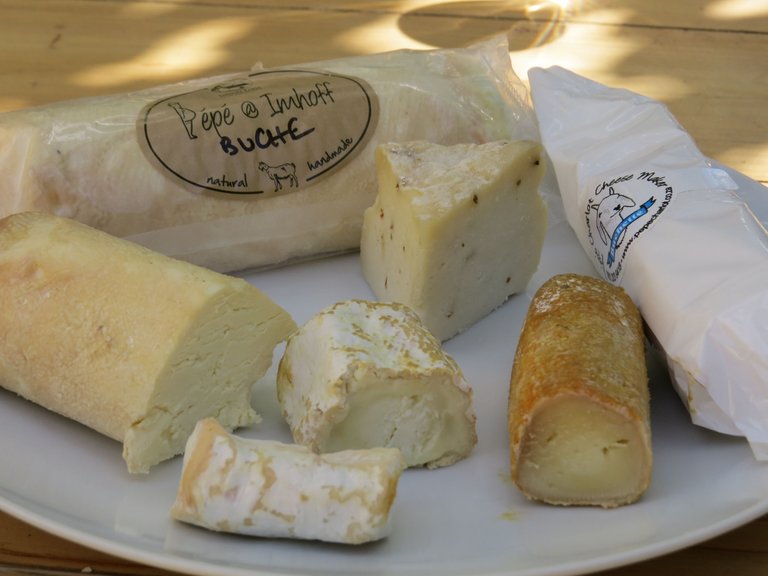
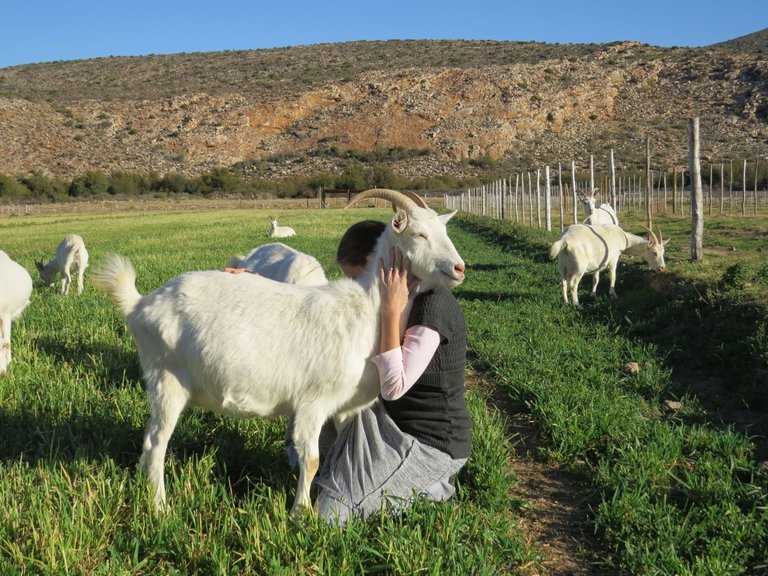
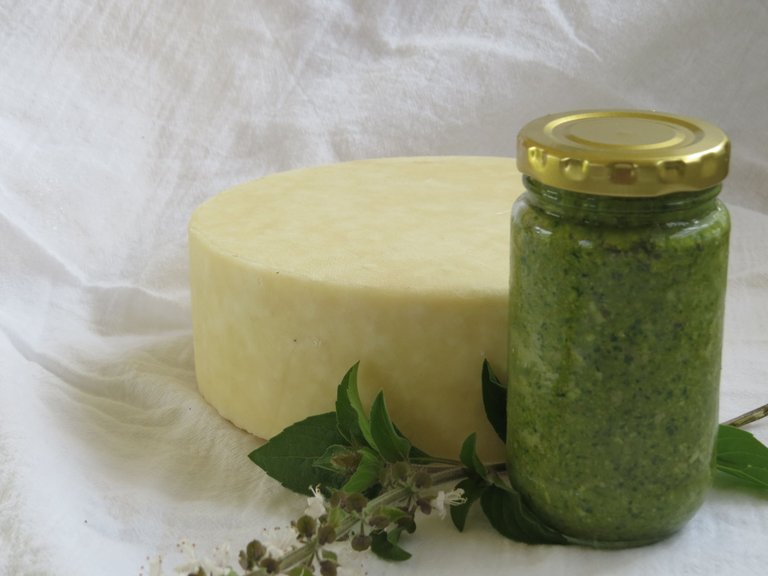
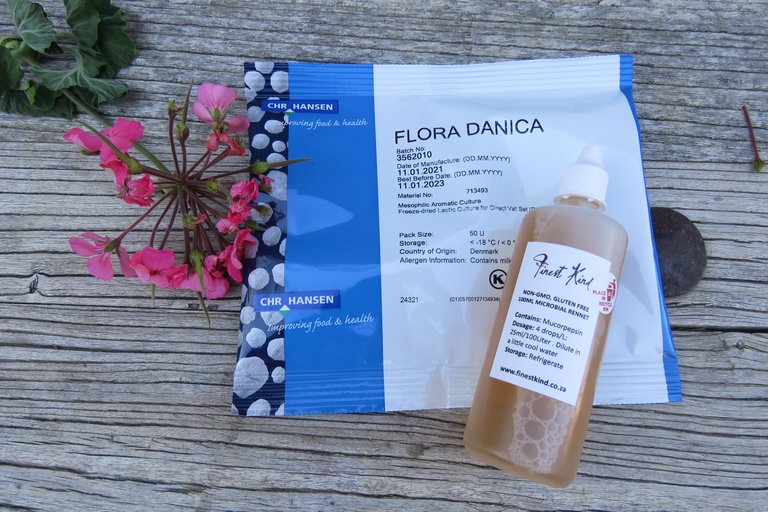
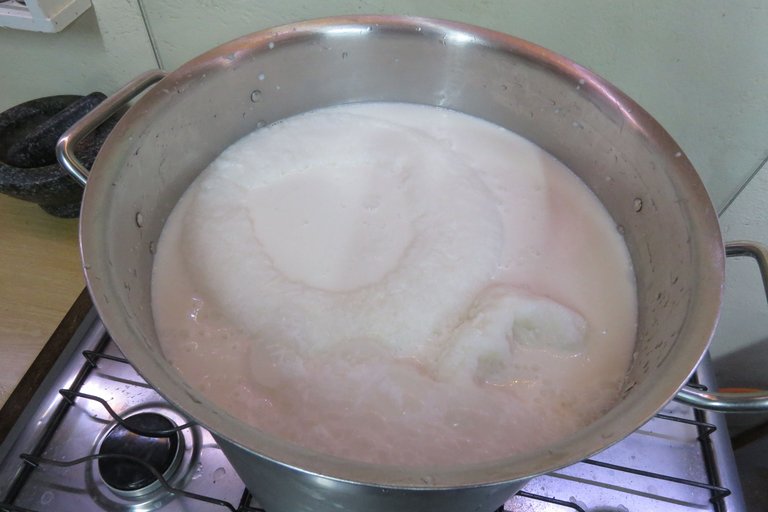
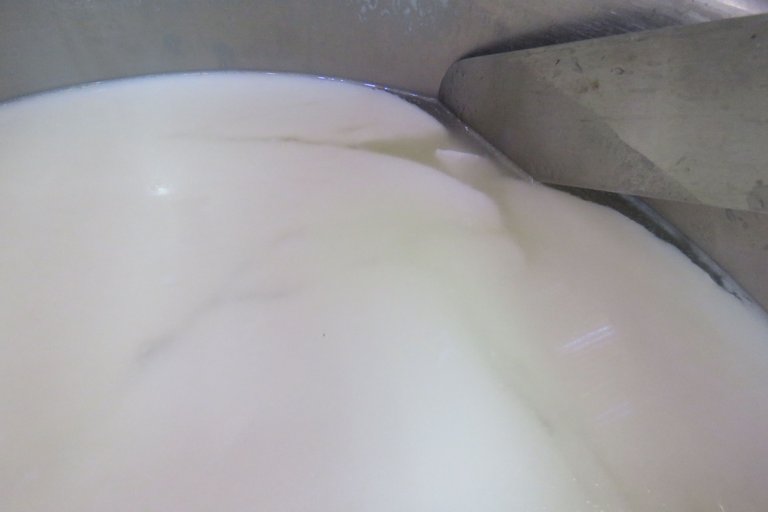
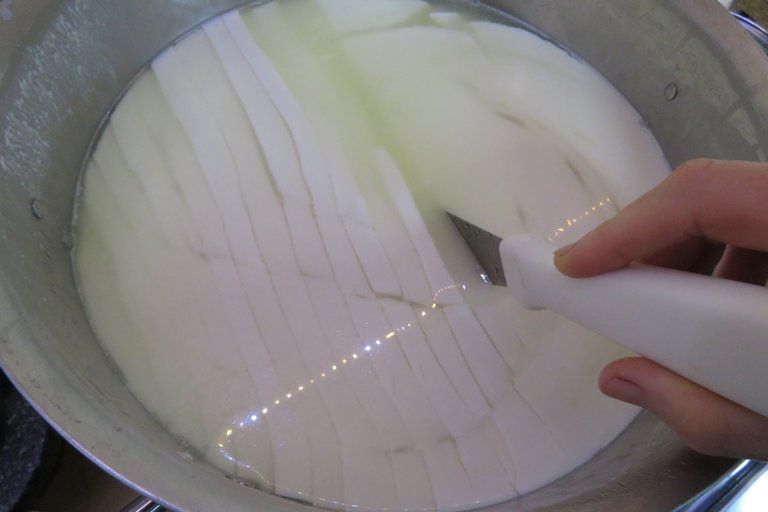
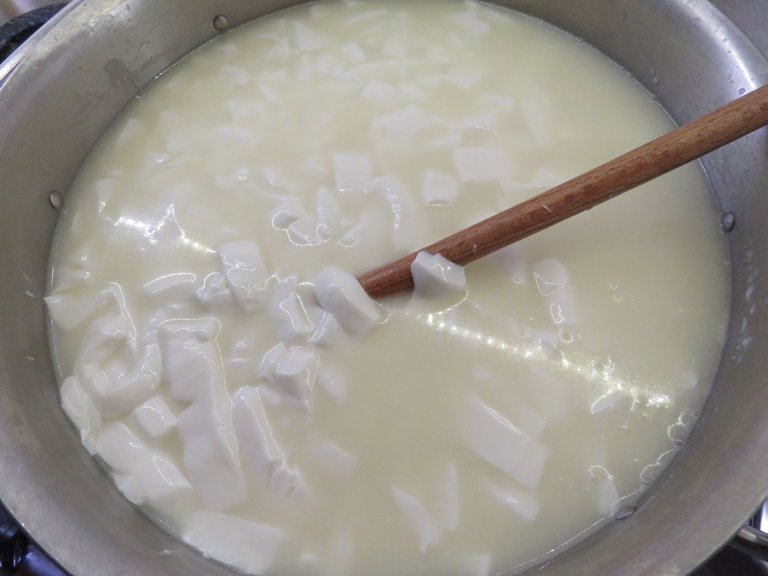
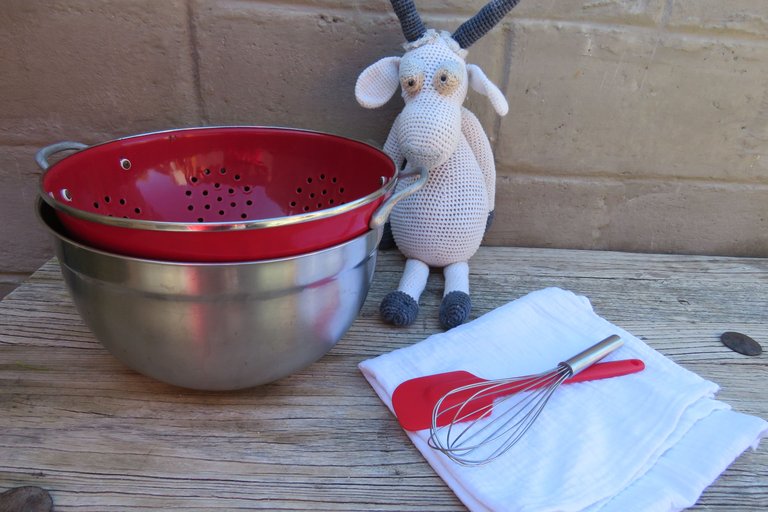
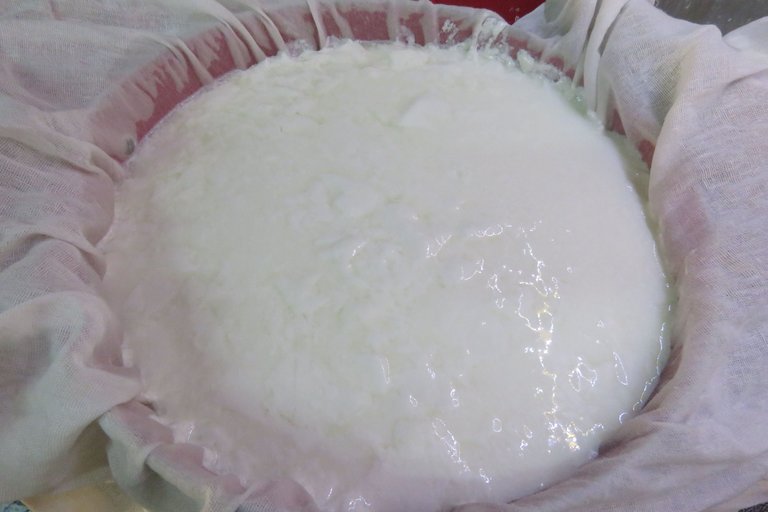
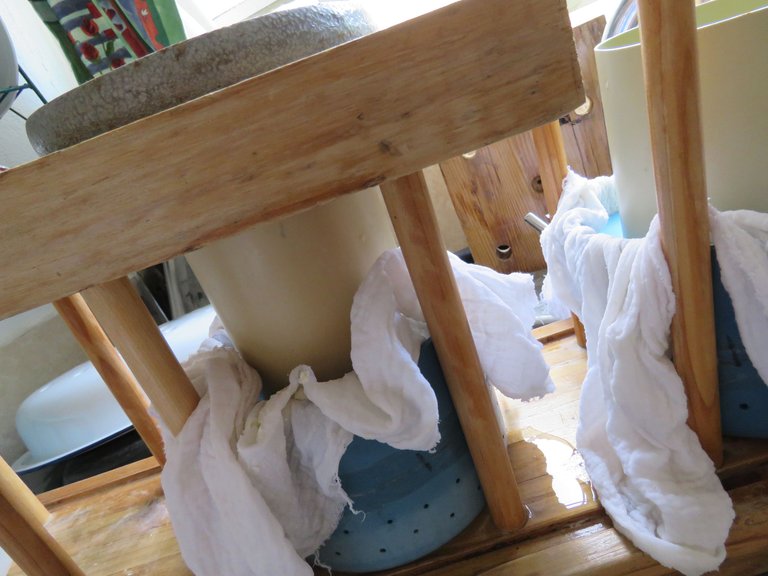
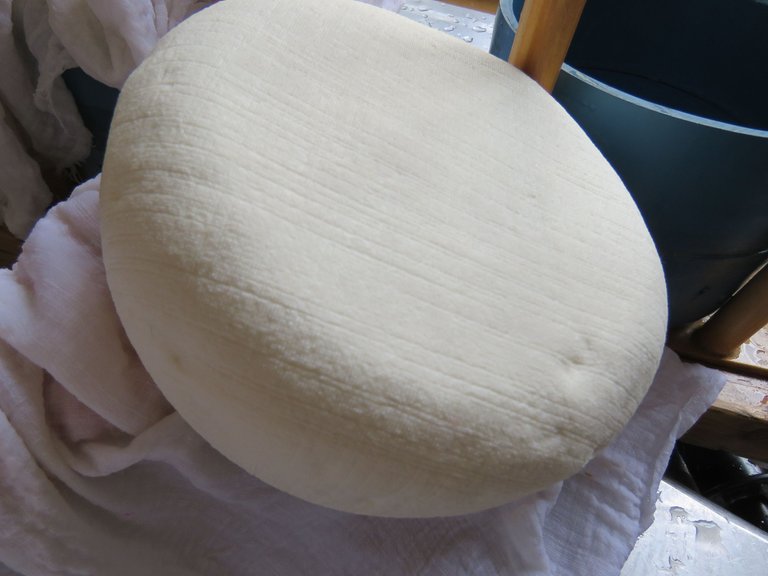
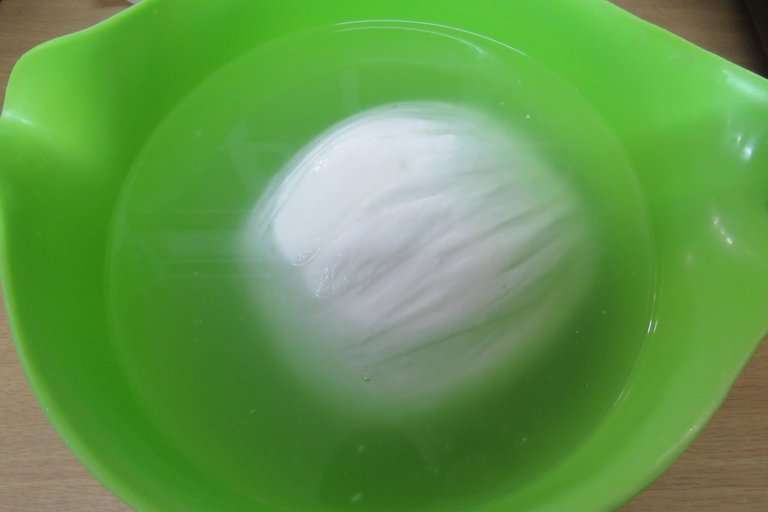
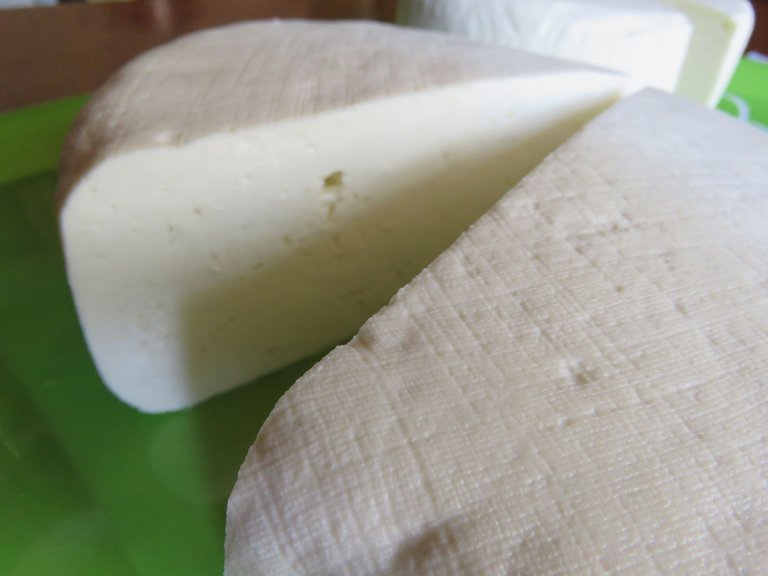
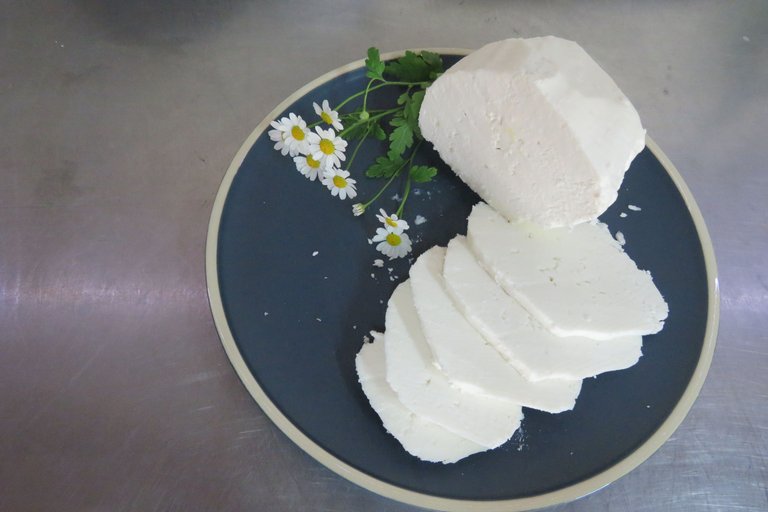
Oh man, buckaroo. I opened up Hive today to see what was going on, and what's going on is the single best thing I've found on here in months, maybe longer.
Is the process the same with cow's milk? I have access to plenty of raw cow's milk, and my clan -like yours- loves cheese the most of all foods. Actually, the raw milk co-op I've been running for like three years is still going strong. I just poured five gallons for my family and one other a few minutes ago.
Do you prefer vegetable rennet or animal rennet? Have you noticed a difference in them if you've used both? I think the veal and cheese markets go hand in hand with a good dairy operation. Eat the young bulls and make yummy cheese with the rennet, keep the young heifers to grow the operation and cycle out older cows. The regenerative effect of a well managed animal herd is inspiring.
As for being vegan besides cheese, that makes me thank God even more for cheese. Definitely one of the best foods, and to be able to make it at home is a real gift. Thanks for sharing this today!
Well this was a welcome comment @foxfireorchard! Thank you for taking a genuine interest. And for giving me such a huge compliment!
In answer: yes the process is exactly the same. The difference will be in the conversion rate. So while my 10 litres of goats milk makes a 700g Cotija your 10 litres of cow milk should covert to about 1.2kg cheese - depending on varying factors. Obviously the taste is different. The stage where you are stirring the curds may take longer. I prefer vegetable rennet. Many reasons. The difference is not in microbial versus animal but more the manufacturers. I pay more but get from a reputable importer who gets certified non GMO cultures and rennets from Italy. Same applies to the culture. You get mesophilic and thermophilic. Which is important if you are a master cheesemaker! For the rest get a mix or rather stick with mesophilic.
Have you ever made cheese before? I started about a decade ago making peasant cheese (my word). It is really easy and doesn't follow the strictest cheese making rules - but it works. Most of the time. If you get the milk still warm that is best. If not warm it slightly. Then either use lemon juice or apple cider vinegar. While stirring the milk slowly drizzle in your acidity of choice. We have a lemon tree and I like the citrus taste in cheese so that is my choice. It roughly works out (with goats milk) to one lemon per litre. How you will know if and when the job is done; the milk will suddenly curdle. STOP pouring ACV or lemon when that happens. Scoop out the curds and use immediately for a really soft peasant cheese. Or hang up in muslin cloth. I used to often toss in black pepper and sundried tomato or olives. Also fresh herbs. YUMMY!
Please let me know when you make the cheese.
Wow! Imagine the surprise when I clicked on your name today! I am enamored with your process and even more so with the love and care that you put into each individual cheese wheel.
It is the most inspirational thing in the world to see you keep your entire operation organic and this, in turn, gives the goats a chance to live their healthiest life with you and all of the Buckaroos. I only wish the entire industry could see how everyone gains by this. We are all of God's creatures, big and small, and don't we all deserve the best?
Thank you so much for taking the time and patience and putting this all together. It was most fascinating and even though I watched different productions in different countries, there is none better than when you can make your own, with the love running full circle and the children watching and learning.
You inspire me every single day, with every single post. Thank you, lovely. Have a great day!
Well I am happy to have surprised you. Just sorry that it is all pictures and not a little taster Denise! Artisan cheese is something to experience - not that it's mine - although goats milk cheeses are among the most unique tasting. You are right about the entire industry though. When I did a cheese course many years ago I was disgusted to hear just how unethical the dairy industry is. Another reason I love that so many are willing to support local and local produce
This post is very good! I love it. Learning to make cheese is necessary, especially for me, who lives in a livestock area, I have not really proposed, because in my country, and especially where I live they make many types of cheese, I will take this post as inspiration to get started in cheese making. Thanks for sharing this information. Greetings.
Please try it @sirenahippie! It is far easier than it looks. I guess like riding a bicycle. Easy once you know how. And there is something special about making your own cheese. One of the countries biggest cheese factories is in our area. But it doesn't compare to artisan cheeses. If you have a look at my reply to @foxfireorchards you can get started with a really quick and basic peasant cheese
Oh how I love cheese, especially goat milk cheese! And I truly love how your adoration for your girls shines through in this magnificent post of yours @buckaroobaby😊 They must be happy girls indeed, and do my eyes deceive me or is that a lovely herd of Saanens that you have? Hello gallons upon gallons of yield, lol!
I raised my two now very large teenage kids on raw, unpasteurized goat's milk. They don't have food allergies and are rarely sick, this post reminded me so much of the days when I milked everyday most of the year, made tons of cheese and my favorite thing in the world, goat milk ice cream, and chased my Nubian, Boer, and Lamancha does around (more like they chased me trying to get the sunflower seeds in my pocket)! I can't wait to give your Cotija tutorial a try! Seriously, awesome, awesome post!!!
Yes! My beloved Saanens. They were up to 60 at one point - and all named - and all knew their name. People thought I was rather strange. Then they saw how the goats responded to me calling them individually and the jaws dropped. When the drought came I had to sell most of them. But I'll always have goats. My girls have helped raise many many little ones. Goats milk is really amazing. My own kids love their milk, all learned to milk while they were learning to walk. One reason I had such a large flock is because I couldn't resist having more and more of the loveable mischiefs. When Hubby started complaining that they ate better than him and took more of my attention I realized they had to pay their way! Then I found out how huge the demand was for goats milk for small children (lactose intolerant or mamas needing to supplement the breastmilk). But ice-cream? WOW. Now you can teach me something! I've never tried it. Goats milk caramels and custards and cheesecake but not ice-cream.
YAY you had goats @generikat! I love my girls. They are my four legged kids. I'm relieved that you didn't know, it feels like I write more goatie posts than anything else - did another one earlier :D I used to have Boer as well. They are kind of a thing in this area. But they are NAUGHTY. They had to go but my Saanens rule. We don't get Lamancha in SA what is the milk like?
Oh @buckaroobaby, your reply made my day. From one strange lady to another, you're awesome!
And 60 head? Dang! I had about 30 during our peak, they turned my farm into a park, but I had to downsize during the last recession due to feed prices and lack of feed availability. It sounds like you know that tale for sure.
My eye keeps getting caught on goat milk caramels, hello yum! That sounds amazing! It's been a few years now since I sold my last girl, I miss them sometimes, and funny enough, I became known as the local goat midwife in these parts because there weren't any vets who would treat them around here. I do miss delivering the kids sometimes.
Most of my herd was Nubian, LaMancha's, and dairy/boer crosses. I did have a Saanen doe that I absolutely adored, she was such a sweetie and her production ability was tops. LaManchas are super fun too, they don't make a lot of noise, have a lovely butterfat content (super creamy!), and are very hardy. Plus the no ears thing is just hilarious. I had a Lamancha Toggenburg doe who produced an incredible amount of milk.
Ahh! Look at me go, I could talk about goats for days, lol! Say hi to your girls for me:)
Me too! What's not to talk about when it comes to goats. And what's not to talk to goats about! I love how my girls talk to me. Except when I try to sleep in. Then they really have a moan. The caramels were easy just time consuming. I had to make them a lot because it's like whipping cream - suddenly you miss the whipped cream and have butter. I would end up with goat fudge more often than caramel.
LOL! I am reading this reply while listening to my cattle bellow because I am a blistering 30 minutes late for feeding time. Spoiled creatures! The goats are worse I think, they sound like they are dying sometimes ha ha!
I think I would end up with caramel and fudge a lot of the time....you know, by accident lol!
Thank you for sharing how to make handmade cheese @buckaroobaby . I guess it tastes really good. Really impressed by the elaborateness of cheese.😊
It's just a pity all I can share are photos #daotam! The taste is something else
Yum! You have been curated @anggreklestari on behalf of FoodiesUnite.net on #Hive. Thanks for using the #foodie tag. We are a tribe for the Foodie community with a unique approach to content and community and we are here on #Hive.
Join the foodie fun! We've given you a FOODIE boost. Come check it out at @foodiesunite for the latest community updates. Spread your gastronomic delights on and claim your tokens.
Join and Post through the Community and you can earn a FOODIE reward.
Thank you @foodiesbeehive and @anggreklestari
Your content has been voted as a part of Encouragement program. Keep up the good work!
Use Ecency daily to boost your growth on platform!
Support Ecency
Vote for Proposal
Delegate HP and earn more
Thank you @ecency
This is amazing, keep doing what you are doing, this made me salivate
You made me laugh! Hopefully you didn't drool all over the laptop/phone
Am glad to have read through this post, and thanks fo sharing
Thank you for reading!
I did think about trying to make cheese, harder cheese, than the kefir cheese I make. But the process is, to my way of thinking, just a bit to finicky. Kefir cheese is so easy! After a 2 year hiatus, I am today starting making kefir cheese again.
It sounds finicky, but is surprisingly simple. I like this recipe because it is ready to eat faster than most other cheeses.
Holy crow, that was a great post. You amaze me. Goat cheese is sooo good. I didn’t know until now that you raised goats, never mind those awesome skills in cheese making. Honestly, thanks for sharing that, I truly enjoyed it!!!
YAY!!! Thank you for the compliment. Happy to hear that you like goat cheese! So few in our first world lifestyles do NOT like it - or even know it. As far as goats go....you didn't know? I am slightly obsessed. Skip the dogs and cats (although I have plenty) give me my goats ANY DAY. I had a flock of 60, and all named, which I sadly had to sell during the drought. Love my goats. LOOOOOOOOVE!!!